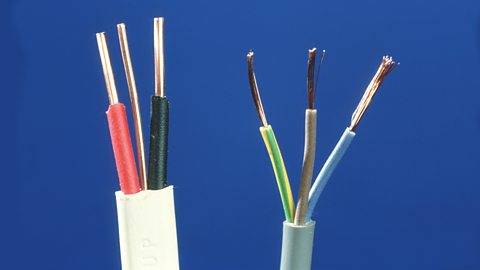Uses of metals
Aluminium, copper and gold are useful metals. The table shows common alloys that contain these metals.
| Alloy | Composition |
| Magnalium | Aluminium and magnesium |
| Brass | Copper and zinc |
| Jewellery gold | Gold and copper |
| Alloy | Magnalium |
|---|---|
| Composition | Aluminium and magnesium |
| Alloy | Brass |
|---|---|
| Composition | Copper and zinc |
| Alloy | Jewellery gold |
|---|---|
| Composition | Gold and copper |
The uses of metals are related to their propertiesThe characteristics of something. In chemistry, chemical properties include the reactions a substance can take part in. Physical properties include colour and boiling point..
Aluminium and magnalium
Aluminium does not react with water. Its surface is protected by a natural layer of aluminium oxide that allows the metal to resist corrosionThe destruction of a metal by oxidation or chemical action, eg rusting.. Aluminium foil is used in the home for wrapping and storing food because it does not react to substances in food. It is malleableCapable of being hammered or pressed into a new shape without being likely to break or return to the original shape., so it is easily folded into shape around the food.
Aluminium has a low densityA measure of compactness and the ratio of mass to volume. It is usually measured in kilograms per metre cubed (kg/m3) or grams per centimetre cubed (g/cm3)., so pieces of aluminium are relatively lightweight. Magnalium is stronger than aluminium alone but still has a low density. It is used to make aircraft parts.
Question
Suggest an explanation for why aluminium is used to make overhead electricity cables.
Aluminium is a good electrical conductorA material which allows charge to move easily through it.. Its low density prevents the wires from sagging too much or breaking under their own weight.
Copper and brass
Copper and brass resist corrosion and are good electrical conductors. Copper is a better conductor than brass, and it is used in electrical wiring. Brass is stronger than copper, so it is used for the pins in electrical plugs.

Gold
Gold is a very soft and malleable metal. It is also very unreactiveA substance is unreactive or inert if it does not easily take part in chemical reactions., so it resists corrosion and stays shiny. The gold used for jewellery is gold alloyed with other metals, often copper. This makes the jewellery much stronger while keeping its ability to stay shiny.
Question
Suggest an explanation for why thin gold foil is used to decorate picture frames.
Gold stays shiny and has an attractive appearance.